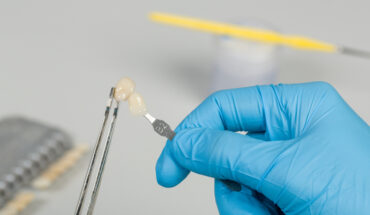
A bright, white smile is often seen as a hallmark of beauty and good health, making teeth whitening a popular cosmetic procedure. Whether you’re preparing for a big event or simply want to enhance your everyday appearance, achieving and maintaining a bright smile can significantly boost your confidence. However, it’s crucial to approach teeth whitening with care to avoid potential pitfalls and ensure long-lasting results. In this guide, we’ll explore the key dos and don’ts of teeth whitening, with a special focus on sustainability in dentistry.
The Dos of Teeth Whitening
1. Consult a Professional Before Whitening
Before embarking on any teeth whitening journey, it’s essential to consult with a dental professional. Your dentist can evaluate the health of your teeth and gums, identify any potential issues (such as cavities or gum disease), and recommend the best whitening options for you. Professional guidance ensures that the method you choose is safe and effective for your specific needs.
2. Choose the Right Whitening Method
There are several teeth whitening options available, from in-office treatments to over-the-counter products like whitening strips and gels. While over-the-counter products can be convenient and cost-effective, they may not be as potent as professional treatments. In-office whitening, conducted by a dentist, typically offers faster and more noticeable results. If you prefer a more sustainable approach, consider using natural teeth whitening methods, such as baking soda or activated charcoal, but be sure to discuss these options with your dentist first.
3. Follow the Instructions Carefully
Whether you’re using a dentist-prescribed treatment or an over-the-counter product, it’s vital to follow the instructions meticulously. Overuse of whitening products can lead to tooth sensitivity, gum irritation, and even enamel damage. Stick to the recommended duration and frequency to achieve the best results without compromising your oral health.
4. Maintain Good Oral Hygiene
After whitening your teeth, maintaining good oral hygiene is key to preserving your results. Brush your teeth at least twice a day, floss regularly, and consider using a whitening toothpaste to help maintain your bright smile. Additionally, scheduling regular dental cleanings can help prevent the buildup of plaque and tartar, which can dull your teeth over time.
5. Be Mindful of Your Diet
Certain foods and beverages can stain your teeth, undoing the effects of your whitening efforts. To maintain your bright smile, limit your intake of stain-causing substances like coffee, tea, red wine, and dark-colored fruits such as blueberries. If you do indulge, try to brush your teeth or rinse your mouth with water afterward to minimize staining.
The Don’ts of Teeth Whitening
1. Don’t Overdo It
It’s natural to want the whitest smile possible, but over-whitening can lead to serious dental problems. Excessive use of whitening products can strip away the enamel, leading to increased tooth sensitivity and a higher risk of cavities. It’s important to give your teeth a break between whitening sessions and to avoid using multiple whitening products simultaneously.
2. Don’t Ignore Tooth Sensitivity
Tooth sensitivity is a common side effect of teeth whitening, especially if you have existing dental issues. If you experience significant discomfort or pain during or after whitening, stop using the product immediately and consult your dentist. In some cases, your dentist may recommend a desensitizing toothpaste or suggest taking a break from whitening treatments until your teeth have recovered.
3. Don’t Use Whitening Products on Damaged Teeth
If you have cracked, chipped, or decayed teeth, whitening products can exacerbate these issues. Damaged teeth are more susceptible to irritation and sensitivity, so it’s crucial to address any underlying dental problems before undergoing whitening treatments. Your dentist can repair these issues and recommend the best whitening approach once your teeth are healthy.
4. Don’t Skip Post-Whitening Care
After whitening your teeth, it’s essential to follow up with proper care to extend the longevity of your results. Avoid foods and drinks that can stain your teeth, as mentioned earlier, and consider using a straw to minimize contact with your teeth when consuming beverages like coffee or tea. Additionally, continue practicing good oral hygiene to keep your teeth looking their best.
5. Don’t Overlook Sustainability in Dentistry
In today’s world, sustainability is an important consideration in many aspects of life, including dentistry. Traditional teeth whitening products often contain harsh chemicals that can have negative environmental impacts. Moreover, the packaging for these products can contribute to plastic waste. To make your teeth whitening routine more sustainable, opt for products with eco-friendly packaging, natural ingredients, or those offered by companies committed to reducing their environmental footprint.
Another way to promote sustainability in dentistry is by choosing a dental practice that prioritizes eco-friendly practices. Many dental offices now use digital records to reduce paper waste, employ energy-efficient equipment, and adopt sustainable waste management practices. By supporting these environmentally conscious practices, you can help reduce the ecological impact of your dental care.
Teeth whitening can be a safe and effective way to enhance your smile when approached with care and responsibility. By following the dos and don’ts outlined in this guide, you can achieve a brighter smile while minimizing potential risks. Remember to prioritize your oral health by consulting with a dental professional, choosing the right products, and maintaining good hygiene practices. Additionally, consider the impact of your choices on the environment by opting for sustainable products and supporting eco-friendly dental practices. With the right approach, you can enjoy a dazzling smile that’s both beautiful and environmentally responsible.




